KAUST alumnus makes impact with coral reef research
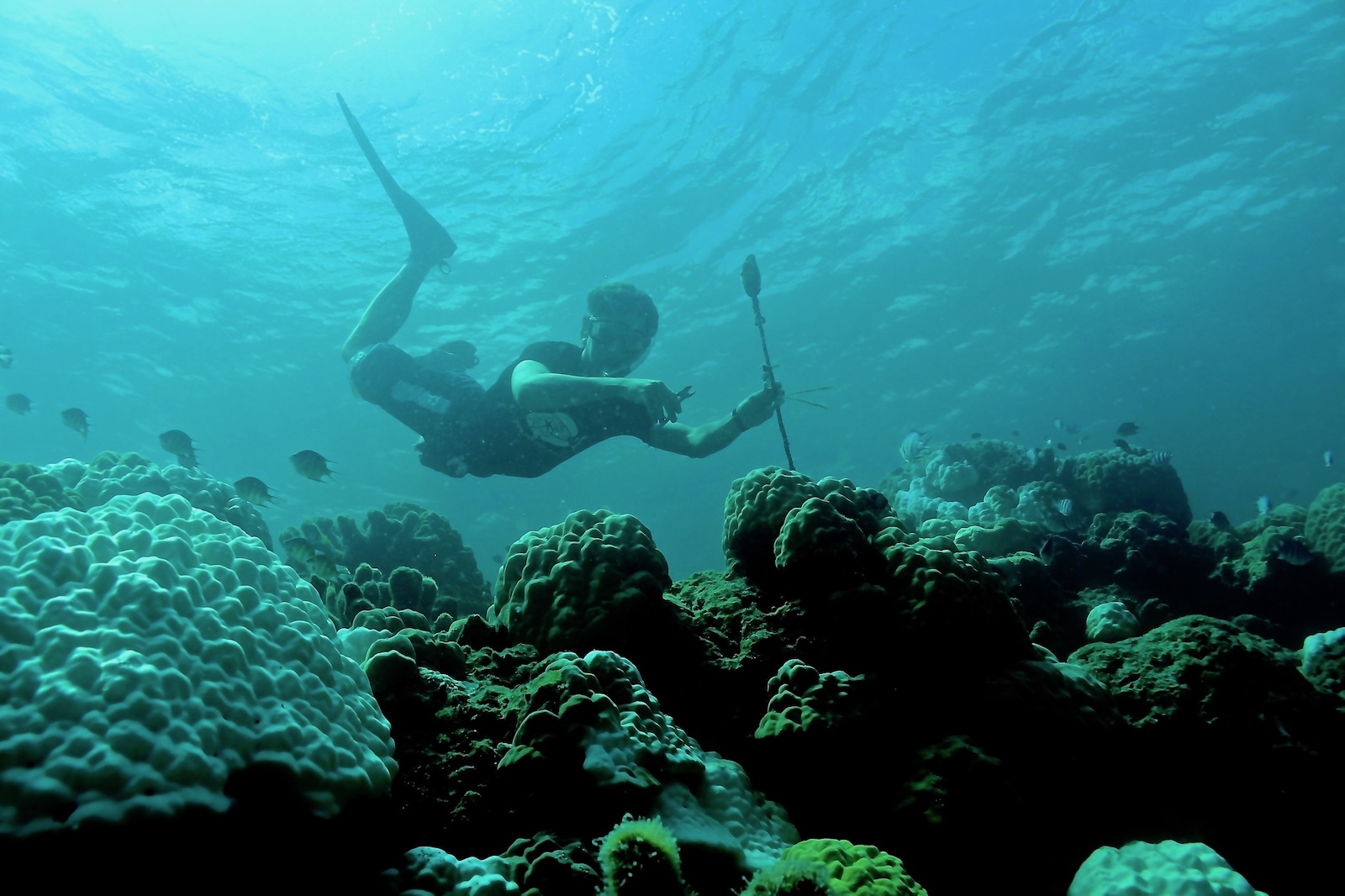
Underwater portrait of marine biologist Thomas DeCarlo studying Porites coral at Dongsha Atoll National Park, China. Photo: Thomas DeCarlo
Sclerochronology is not a word the average person hears every day, let alone understands, but for KAUST alumnus and marine biologist Dr. Thomas DeCarlo, the word is at the core of his work. Literally.
Sclerochronology is the study of the hard tissues and skeletons of invertebrates, and in DeCarlo's case, long-lived, tropical corals. He drills, dates and analyzes cored samples from corals to learn how they grow and also respond to ocean warming and acidification. Sclerochronology is one tool in a suite of research techniques that DeCarlo applies to his projects. Carbonate geochemistry, Raman spectroscopy, paleoceanography and remote sensing are others.
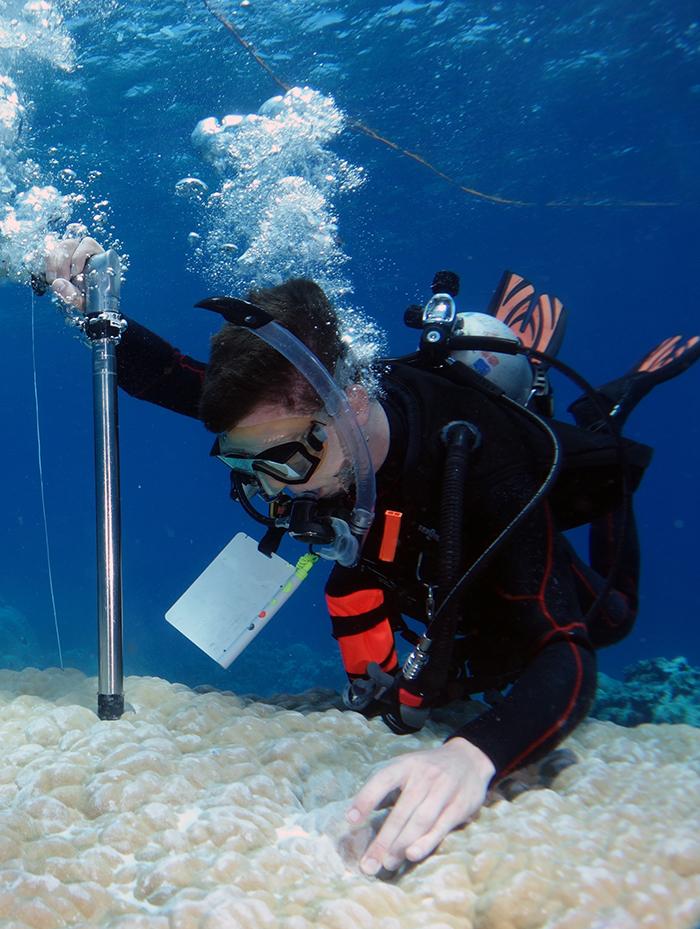
Marine biologist Thomas DeCarlo drills a coral core sample from Yonge Reef within the Great Barrier Reef of Australia. Photo: Anne Hoggett
"Ocean temperatures are now approaching one degree above what they were in industrial times, with a projected increase of two to four degrees, which could have terrible consequences for corals," said DeCarlo.
"Coral reefs are a nursery and home to many different marine species, provide fish for human communities, and buffer shores from storms. If reefs collapse, so, too, do these biodiverse life systems that depend on them for survival."
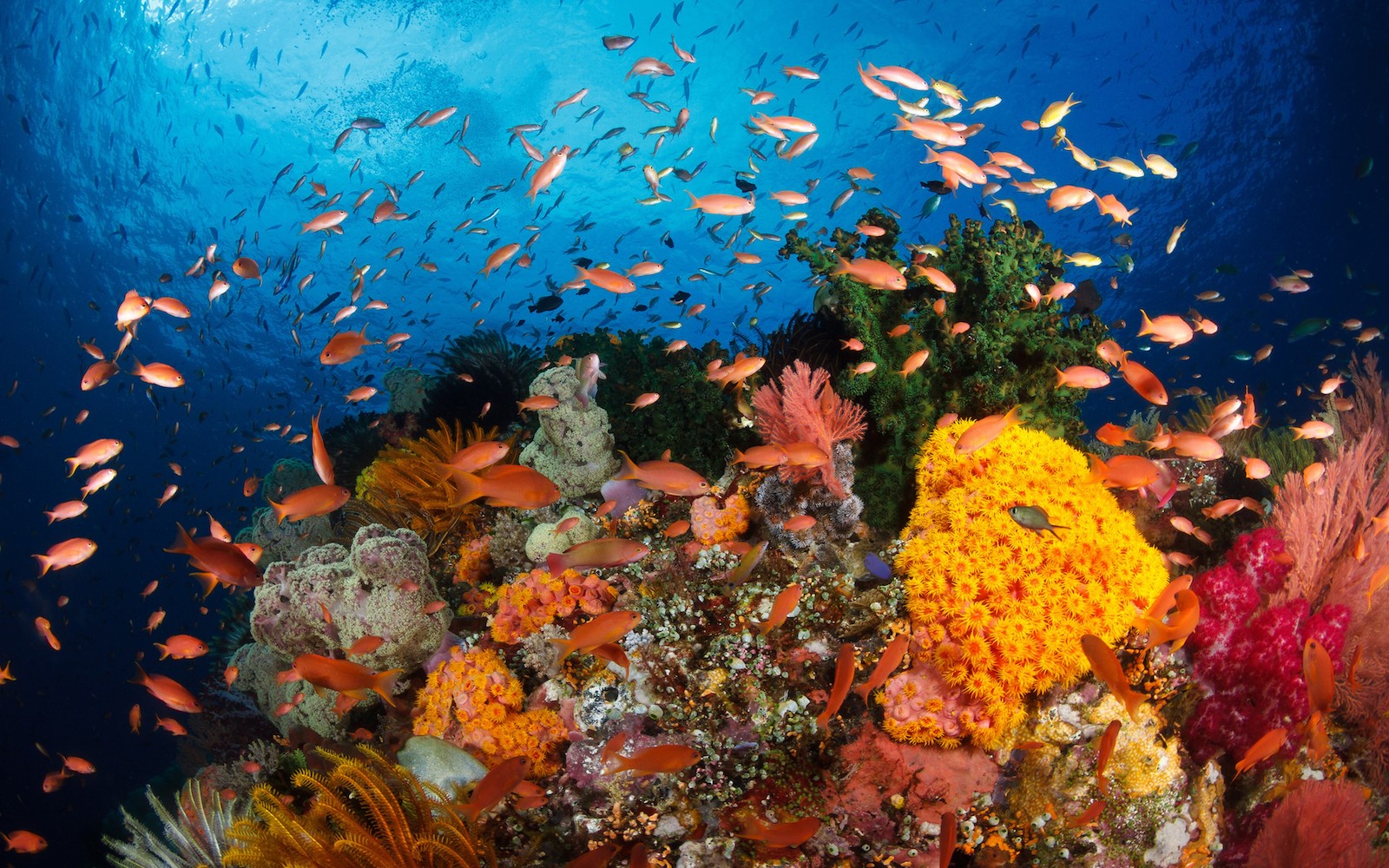
Healthy coral reef and marine life in the central Red Sea of Saudi Arabia. Photo: KAUST
"KAUST is one of the few, if not the only, places where a state-of-the-art computerized tomography (CT) scanner exists within a couple of kilometers from massive, centuries-old corals," said DeCarlo.
"This unique setting enabled me to develop well-replicated time series of coral growth rates due to the access to local reefs and KAUST's CT scanning technologies."
Marine science background
DeCarlo saw corals for the first time while learning to scuba dive during a college field trip to Turks and Caicos Islands, an archipelago in the West Indies of the Atlantic Ocean. Intrigued by the variety and abundance of marine life and how the reef system functioned, he has been hooked ever since.
He pursued an education in coral reef ecosystems at some of the most distinguished institutions in the world, completing his undergraduate degree in marine science at the University of San Diego, and a PhD in oceanography as part of a joint program between Massachusetts Institute of Technology and Woods Hole Oceanographic Institution.
He also received a prestigious NSF (National Science Foundation) Graduate Research Fellowship at Woods Hole Oceanographic Institution, and, prior to KAUST, a postdoctoral research appointment at the University of Western Australia and ARC Centre of Excellence for Coral Reef Studies.
In addition to conducting research in the Red Sea, DeCarlo has worked in the South China Sea, equatorial Pacific, Turks and Caicos Islands, U.S. Virgin Islands, the Coral Sea, and through his current faculty appointment, the barrier reefs of Hawaii in the Pacific Ocean.
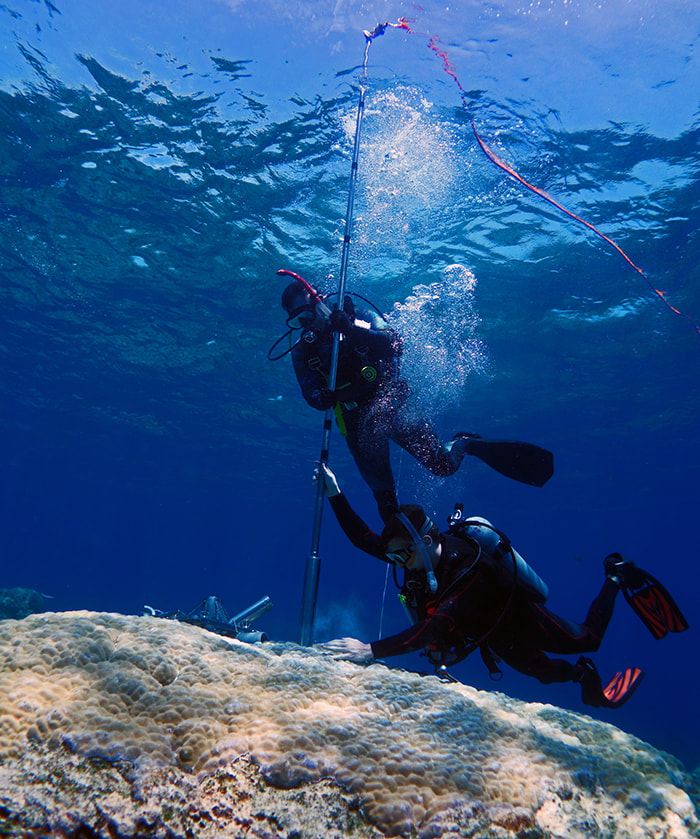
Underwater view of Thomas DeCarlo and a fellow researcher in scuba gear preparing to sample coral cores from a massive Porites in the Great Barrier Reef of Australia. Photo: Thomas DeCarlo
Red Sea research
Corals are among the most long-lived species on the planet and can grow to be thousands of years old. More than 300 species grow in the Red Sea. DeCarlo focuses his research on
Porites, a genus of slow-growing coral found in most tropical reef locations around the world.
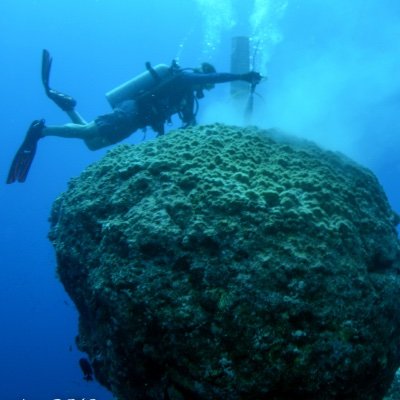
Underwater view of Thomas DeCarlo in scuba gear above a massive Porites coral, Great Barrier Reef, Australia. Photo: Thomas DeCarlo
Porites can join to form massive hemispherical colonies across the coral reef. They build their skeletons cued to monthly lunar cycles. Like successive rungs on a ladder, the living coral polyp is built on a thin layer of old skeleton. With each full moon, the coral deposits new tissue called dissepiments, and climbs a little bit higher on the reef—approximately 1/10th of a millimeter.
"Scientists had hypothesized that coral dissepiments form on a lunar basis, but this had not been tested in a formal way. Previous attempts tracked dissepiments over just a couple months," said DeCarlo.
"I am especially proud of my research because it was a first-of-its kind, comprehensive study that took my entire Ph.D.—four years—to complete. It required a lot of patience and foresight."
DeCarlo considers two time scales when analyzing corals. He uses CT scans to assess both monthly and annual growth rates. Annual growth is expressed as paired, banding patterns of alternating low and high densities. Like tree rings, the banding patterns reveal their age and general evidence of climate stressors such as bleaching that might have occurred throughout the year. He then uses a microscope to analyze the monthly growth rates of corals. The skeletal rungs help him pinpoint specific times in which these stressors occurred.
Both the shorter and longer time scales impart information about coral survival. The oldest living coral from the Red Sea that DeCarlo studied dates to 1910. And the oldest living coral he has studied, in general, dates to 1818 from the Coral Sea.
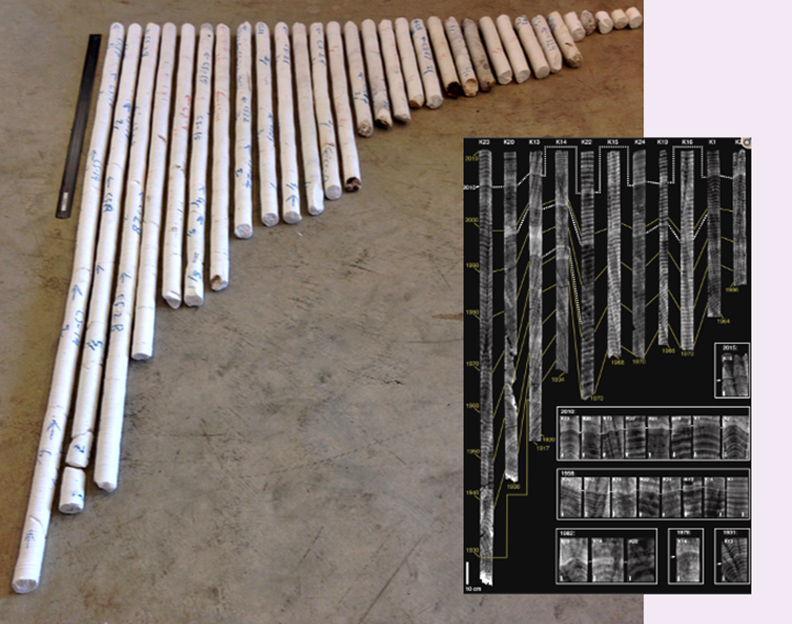
Composite photo shows samples of coral cores alongside CT scans of coral skeletal cores showing annual pairs of light and dark bands of high and low density. Photo: Thomas DeCarlo
Bleaching conditions
Porites are more resilient to stress than other kinds of corals, yet they are still sensitive to high sea temperatures. Much of the published research on coral bleaching attributes temperature as the cause. DeCarlo has discovered that upwelling of nutrient levels also plays a role and can be toxic to corals.
"Summer monsoons circulate nutrient-dense waters from the Gulf of Aden to the Red Sea. The symbiotic algae that live in corals thrive on these nutrients. In return, they provide food and energy for the corals to grow," said DeCarlo.
"But warmer waters create more nutrients, which create more algae, which create more oxygen and waste build-up in corals. When high waste conditions combine with high heat, this situation causes bleaching, which could turn deadly, even for Porites."
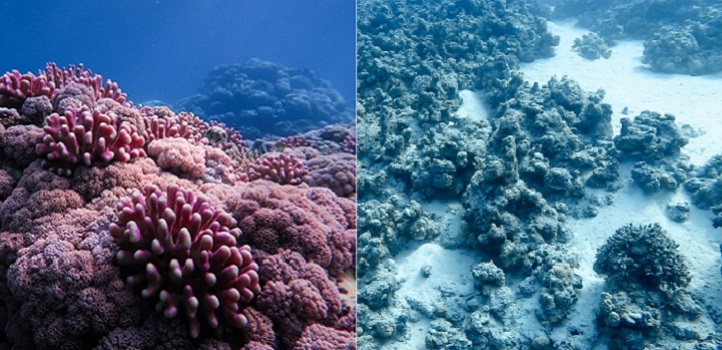
Comparison view shows healthy coral reef (left) alongside dead coral reef (right) due to coral bleaching. Photo: Charlotte Young
An interesting fact DeCarlo noted is that 2015 was not the hottest year on record for the Red Sea. 2002 was the year for that, and yet only minor bleaching occurred then across the reef. DeCarlo wondered about this difference in temperature history. Why had mass bleaching occurred in 2015 and not other high heat years?
Using satellite data, climate models and other sources, he studied the history of monsoon upwelling, wind patterns and other weather factors affecting coral reef ecosystems in the Red Sea since 1982. He discovered that the bleaching event of 2015 could be linked to a combination of high nutrient levels and weather patterns, not just temperature.
"My research is unique from other studies in this area because it considers a combination of factors that inform and refine what is known about coral bleaching," said DeCarlo.
"In the case of the 2015 bleaching event, my findings were counterintuitive because nutrients circulated by monsoon winds are carried by cool water currents from the deep ocean. But during monsoon season that year, the winds stopped earlier than usual, which then stopped the cooling mechanism. As a result, the nutrient-rich waters of the Red Sea just sat there, heating up."
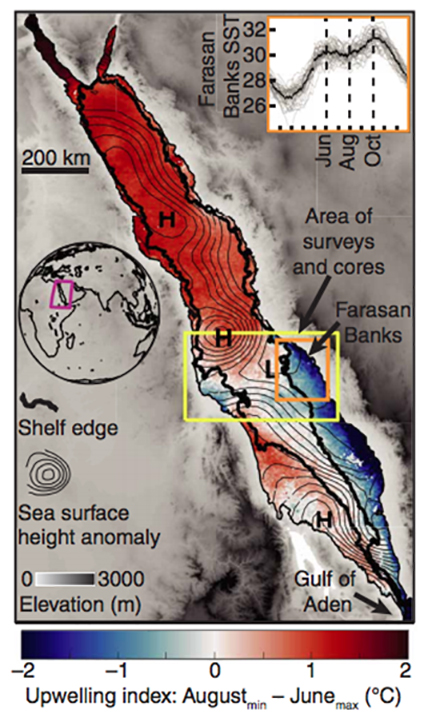
In knowing the history of these corals, DeCarlo said predictions can be made about their future based on different climate scenarios.
Corals past and future
The Saudi coastline of the Red Sea shows several generations of reef formation through time. While at KAUST, DeCarlo was inspired to also study fossil corals. The hundreds of miles of preserved coral skeletons on the shore make the Red Sea an amazing laboratory for research. The oldest fossil coral he dated here is estimated to be approximately 120,000-years old.
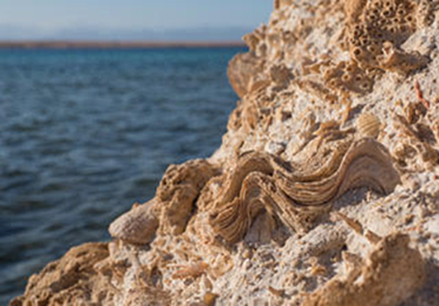
"Aside from being covered in dust, these 120,000-year-old corals are pristine, perfectly intact skeletons that look like corals underwater today. I CT scanned them in the exact way I do with the corals growing in the Red Sea. There is a margin of error considering the time scale, but, relatively speaking, it's a pretty close estimate."
In contrast, DeCarlo said that fossil corals from reefs in Hawaii, which date to approximately the same time, are severely degraded and barely distinguishable due to the tropical climate and heavy rainfall there.
While in Hawaii DeCarlo will continue research begun at KAUST, and hopes to also do some coral coring. He said that historical temperature measurements taken in Hawaii from ships suggest that a few years in the 1960s were as hot as a few years from the last decade when bleaching events occurred. He is curious if these earlier warm events also caused bleaching, and thinks he can tell from the coral cores.
Reflecting on his future research path, DeCarlo said, "Ultimately, I want to build a global database of the history of coral bleaching events over the past century, using coral cores to fill in the gaps of when and where people were not underwater to observe the reefs."
Related Stories
- Thomas DeCarlo website
- The past century of coral bleaching in the Saudi Arabian central Red Sea
-
Helping corals survive in the Red Sea

